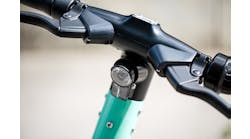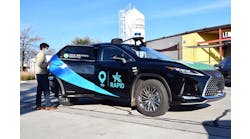According to the MaaS Alliance, Mobility-as-a-Service (MaaS) puts customers at the center of transport services, offering them tailor-made mobility solutions based on their individual needs. MaaS integrates and sells mobility services in real-time information primarily by app. Currently, there are 40 MaaS projects in Europe, primarily in medium-to-large urban areas. Finland, home of Mass Global Inc., is virtually a national beta site for the emerging sector. More locally, MaaS for small urban and rural communities is finding a kind of test-bed in Upstate New York.
Tompkins County is located in New York State’s Finger Lakes Region. The Ithaca small urbanized area is surrounded by rural towns, while the county is surrounded by five rural counties and one small urban/rural county. The economy is based on higher education (Cornell University and Ithaca College), manufacturing, agriculture and tourism. A net of 15,000 people commute to work in the county, which has a population of just over 100,000 people. It features a robust public transit system, and diverse non-profit and for-profit mobility services. There are new city downtown TDM and bikeshare projects coming online in 2018. The county supports local and regional mobility management programs. Further, the New York State Energy Research and Development Authority and New York State Department of Transportation have invested state and federal funds to bring innovative projects to fruition. This culture of collaboration enables thinking outside the box—and that includes MaaS. The following is a schematic discussion of MaaS as it applies to small urban and rural areas, of which Tompkins County is exemplar.
Meeting the challenge
The market challenge of MaaS is to shift expenditures from private car ownership to integrated mobility services. In 2016, the average American household spent $9,049 (16% of total expenditures) on transportation, primarily to purchase, maintain and operate privately owned automobiles. Housing plus transportation costs, as a percentage of household income, provide a realistic measure of total housing/transportation affordability.
The urban/rural divide between income and affordability is demonstrated by more rural residents expending a higher percentage of their income for housing/transportation expenses than urban residents. The lack of access to affordable mobility, housing, daycare, healthcare and Internet are structural deficiencies which play a directly observable role in the continuation of poverty, preventing many otherwise capable people from obtaining quality jobs. In addition, there are many people limited by age, ability, health condition, location or income who lack access to transportation to meet essential needs. Furthermore, mobility inequity is a common obstacle undermining access to public programs, such as education, healthcare, social services, aging and employment services.
MaaS focuses on being a full-service reseller of mobility services to the public. MaaS uses a customer-centric approach to enable people to replace owning a second car (and in limited circumstances, a primary car) with a customized bundle of mobility services backed up with high-quality customer support. Furthermore, MaaS is envisioned as market-based, replicable, customer-focused, sustainable and locally controlled—in short, an enterprise that can be operated as a not-for-profit, a cooperative or a for-profit business.
The majority of MaaS customers would pay market prices for their mobility services, thereby reserving the use of public subsidies for persons with limited income who otherwise lack access to affordable mobility. MaaS empowers customers to make informed mobility choices, with an ability to finance their mobility solution and with customer service when trips go wrong. In these ways, MaaS would approximate the on-demand transportation, mobility, independence and convenience of private car ownership, but at a lower cost. MaaS also provides for effective customer feedback to mobility service operators and incentives for continuous improvements in the quality of mobility services. With MaaS, the public sector can partner with for-profit and non-profit operators to make investments to reduce operating costs, improve productivity and create synergies of a seamless transportation system. The goal is to increase business opportunities for participating operators. But in the end, the marketplace will reward the operators and services that perform best for their customers.
Building a framework
MaaS provides a framework for small urban and rural communities to begin with the mobility services they have today, and to move forward to put the strategy’s three elements in place: 1) a family of mobility services, including all operators and public programs; 2) a comprehensive community education and information program of all mobility services, programs, and options; and 3) a mobility coordination center to enable customers to create and purchase an integrated bundle of mobility services backed up with superior customer support when problems arise.
The first task is to identify and inventory the network of operators, businesses, services, policies, and programs—the Family of Services, which directly provides mobility, sets prices for customers or determines one’s eligibility for a benefit. For example, a fixed-route public transit system has routes and schedules, which define the scope of service, and fare policies which set prices. This information would be accessible by an app or Google Transit for trip planning, fare payment and real-time passenger information.
The Family of Services inventory would include current and future mobility services, such as:
- Public and private operators, including public transit, paratransit, taxis, and related programs such as ADA paratransit, demand-response, accessible taxis, taxi vouchers, transit passes, and first/last mile services;
- Rental services: car rental, car-share and bike-share;
- Rideshare: Passengers could pay a per-mile rate to drivers. Public programs could pay volunteer drivers a per-mile rate to transport clients, such as Medicaid trips;
- Bicycle services: maintenance vouchers, purchase of hybrid electric or conventional bicycles;
- Vanpool membership, eligibility for price discount based on income; and
- Volunteer transportation services or hybrid services.
A hypothetical family of services in a small urban area is shown in Table A. All mobility services can be included. The example includes two transit fares (there usually are more), two car-share memberships depending upon frequency of use, and vouchers for car rental, taxi trips and bicycle maintenance. Two bicycle purchases are added as an example of making a small mobility purchase, although they could just as easily be financed through regular consumer credit. A future bike-share rental service is included to provide ad-hoc bicycle rental in a small city. Rideshare has two options including a mileage credit for drivers and a per-mile payment for riders. The mileage credit is for drivers who are volunteer drivers for a public program such as Medicaid. In this example, paratransit is for seniors and persons with disabilities. Vanpool is targeted for regional commuting. The last item is a guaranteed-ride program (for up to six trips a year). For the purpose of simplicity the example does not include a number of supplemental benefits which are targeted to customers meeting specific eligibility criteria.
Next, a comprehensive, one-stop source of community mobility information and consumer education is an effort to plug a huge knowledge gap in rural/upstate communities. Without a comprehensive program, there is no sustainable way to provide consumer education, outreach and/or advocacy around community mobility issues. A comprehensive program will feed into the local 211 and 511 systems, but its community outreach, mobility advocacy and community-based social marketing will set it apart.
A comprehensive mobility education program:
- Serves the general public, targets markets of limited-income persons, seniors and people with disabilities, community agencies, employers, and transportation providers and planners by providing a single source of information on transportation alternatives, including the family of services. Through workshops, a website and a variety of collaborative educational efforts across the community, the program would encourage people to compare, combine and use sustainable transportation strategies;
- Channels consumer feedback and dialogue on transportation services and planning to mobility service providers, public agencies, and the public to help identify opportunities for improving transportation access, efficiency, and integration; and
- Includes information on all modes of public transit, paratransit, taxis, car-share, vanpool, ridesharing, volunteer driver services, affordable car ownership, bikes, walking, transportation supports for low-income families, school transportation and individual travel training.
Tompkins County developed a comprehensive mobility education program called Way2Go, which is operated by the Cornell Cooperative Extension of Tompkins County. Way2Go provides a model for replicating a regional or statewide deployment.
Finally, a Mobility Coordination Center is a combination of the MaaS sales office and a one-call/one-click center to schedule paratransit, volunteer driver, local TNC, and guaranteed-ride trips.
The MaaS sales office assists customers with planning and financing their mobility services. MaaS would adopt the tool of budget billing, used by power utility companies, to enable customers to pay an average monthly payment based on an estimated annual budget. The budget billing payments would be reconciled quarterly. The budget includes payments to mobility operators for trips and services, and customer support services. Tables B and C show hypothetical mobility budgets of city/urban and rural households, respectively.
The city household has two working adults and a youth in school. The walkscore of 96/100 shows the housing location is centrally located and readily accessible by walking and bikes. It is able to function with one car in conjunction with a combination of bus passes, car-share hours, taxi vouchers and bike maintenance vouchers, at a monthly cost of $163. (These are all market prices.)
The limited-income rural household in Table C, which consists of two adults and one infant, lives in a location not served by public transit and not walkable to any services. They have one car. One adult is enrolled in vanpool and uses car-share at their city work location to run errands. The at-home adult with the infant uses the car as needed. Plus, the family receives rideshare driver reimbursement as a part-time volunteer driver. The budget includes a $50/month vanpool subsidy from an employer.
In summary
A community-based MaaS system will be an essential business partner for mobility services providers, and in working with public and private entities to continuously improve mobility services. The key is an ironclad commitment to deliver excellent customer service.
Successful MaaS integration includes the following elements:
- Be a member organization;
- Operate a call center for transactions by phone and online;
- Individual mobility plans and annual mobility budget;
- Sales and financing with budget billing;
- Process payments to service providers;
- 24/7 concierge and guaranteed ride services;
- Synergy for business co-marketing and discounts;
- Use inbound marketing and smartphone apps;
- Employ data safeguards and privacy practices; and
- Be a learning organization.



